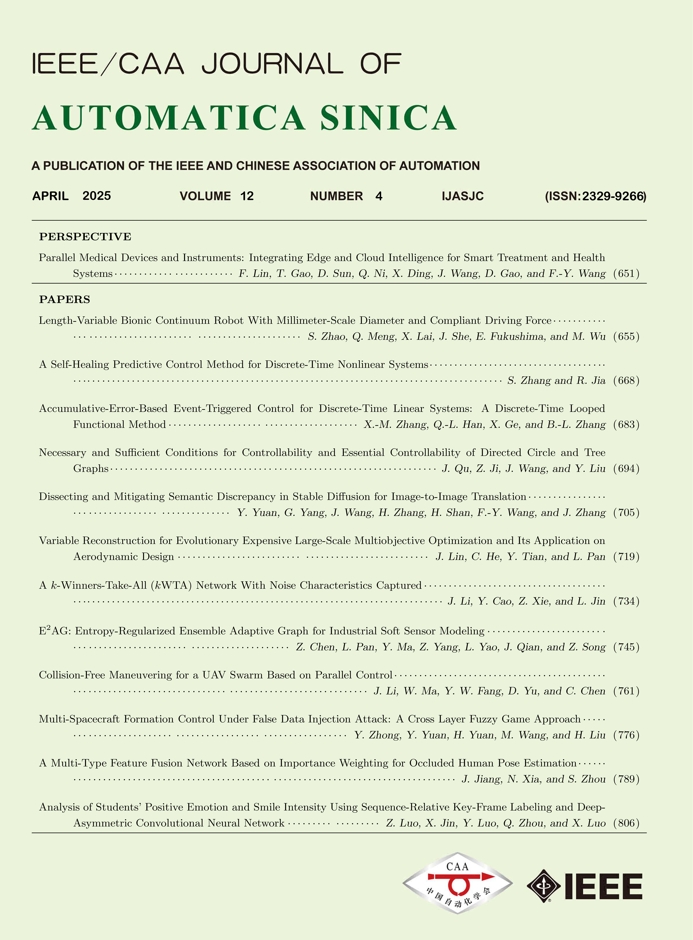Early Access
Display Method:
, Available online
Abstract:
, Available online
Abstract:
, Available online
Abstract:
, Available online
Abstract:
, Available online
Abstract:
, Available online
Abstract:
, Available online
Abstract:
, Available online
Abstract:
, Available online
Abstract:
, Available online
Abstract:
, Available online
Abstract:
Distributed Event-Triggered Nash Equilibrium Seeking for Aggregative Game With Second-Order Dynamics
, Available online , doi: 10.1109/JAS.2024.124830
Abstract:
, Available online
Abstract:
, Available online
Abstract:
, Available online
Abstract:
, Available online
Abstract:
, Available online
Abstract:
, Available online
Abstract:
, Available online
Abstract:
, Available online
Abstract:
, Available online
Abstract:


 E-mail Alert
E-mail Alert


